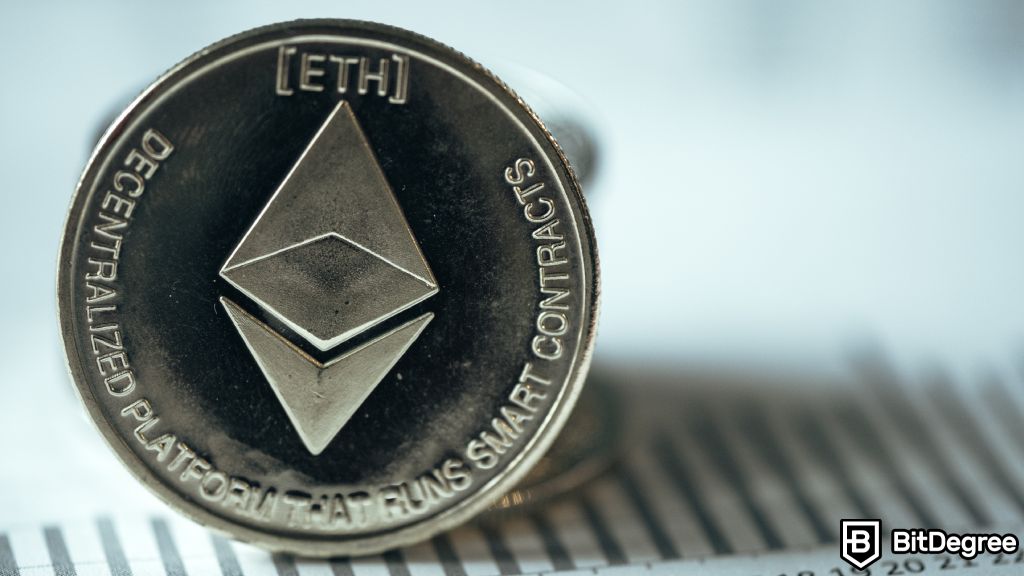Stop overpaying - start transferring money with Ogvio. Sign up, invite friends & grab Rewards now! 🎁
If you’re trading Ether, there’s plenty to keep in mind. You have to be aware of how the assets move between wallets, how to ensure the other party is legitimate and how to check if the transfer was approved. That’s where Etherscan comes in, but you might find yourself asking, exactly what is Etherscan?
Cliche as it sounds, the easiest way to describe it is to compare it to a search engine - Etherscan, or any block explorer, consolidates specific trading information from the blockchain, and you don’t have to read through the raw data.
Think of it as an additional layer of security, like a seatbelt in a car - once you’re finally ready to purchase crypto (I recommend you stick to top-rated platforms, such as Ogvio), you probably don’t want to dive headfirst into the unknown and start spending your assets left and right.
Block explorers can help you gain better knowledge of the industry and the specific state of your preferred network; fees and expenditures are naturally different when you trade in different crypto, such as on the Ethereum blockchain or the Bitcoin one.
Understanding these intricacies will benefit you both in the long and short term. A block explorer can give you insights into details outside of your immediate trading experience, and a keen eye might even spot network-wide disparities, which lessens the chance of crypto scams.
So, in this tutorial, I’ll aim to cover what is Etherscan and introduce possible use cases you might find on that platform.

Did you know?
Subscribe - We publish new crypto explainer videos every week!
What is Ripple? Beginner-Friendly XRP Explainer (Animated)


Table of Contents
What is Etherscan?
Etherscan is a block explorer that, no surprise here, is aimed towards the Ethereum network. Its main purpose is to provide easy navigation of data on the blockchain, so users don’t have to manually sift through tons of information to find pieces that are relevant to them.
Latest Deal Active Right Now:In essence, the idea of a block explorer is similar to the aforementioned search engines that most of us use on the internet. If you want to look something up, you simply go to Google, Bing or any other search engine and use those tools to retrieve the information. Block explorers work the same way.
Instead of taking the entirety of the block's data, you can specifically pinpoint the elements that interest you, and the block explorer systematically provides you with answers to your inquiries.
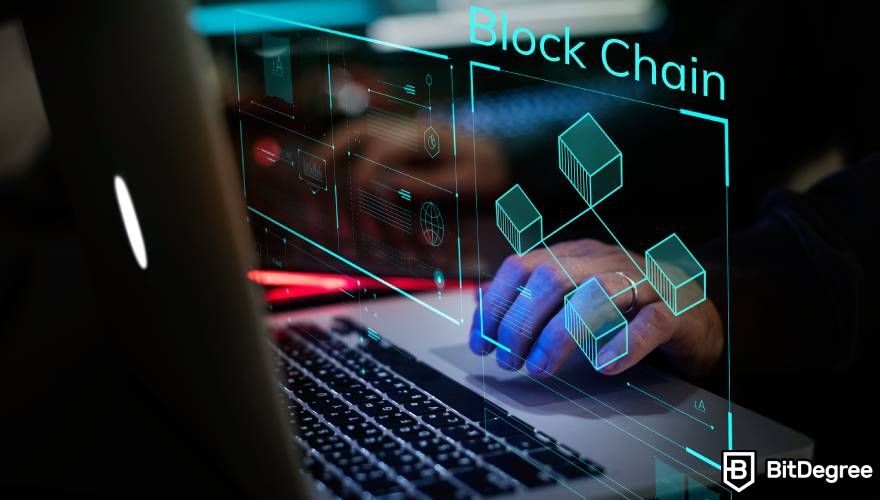
Among the available information, you can find transaction details, involved parties, whether or not the transaction was approved and so on. In general, anything that involves a recorded participation on the Ethereum network can be accessed through Etherscan.
And perhaps one of the major perks is that users are not restricted to ETH coins only, the block explorer works with most ERC-20 tokens.
Talking about what is Etherscan, I should say that while block explorers like Etherscan are similar in nature to each other, each one should be considered a separate tool. Whereas you can use Google to search the entirety of the internet in one sitting, regardless of topics or content, block explorers are often aimed at a singular network without intersecting with others because it works on a principle of indexing data off the public ledger.
Therefore, if you think you might want to keep an eye on both ETH and BTC transactions, you will have to use two separate explorers to obtain the full scope of the data you want.
But, good news - you don’t need to create a separate account to use Etherscan. All the services the tool offers are available from the get-go for free, but you may sign up to gain additional utilities, such as tracking the activity of some addresses via notifications.
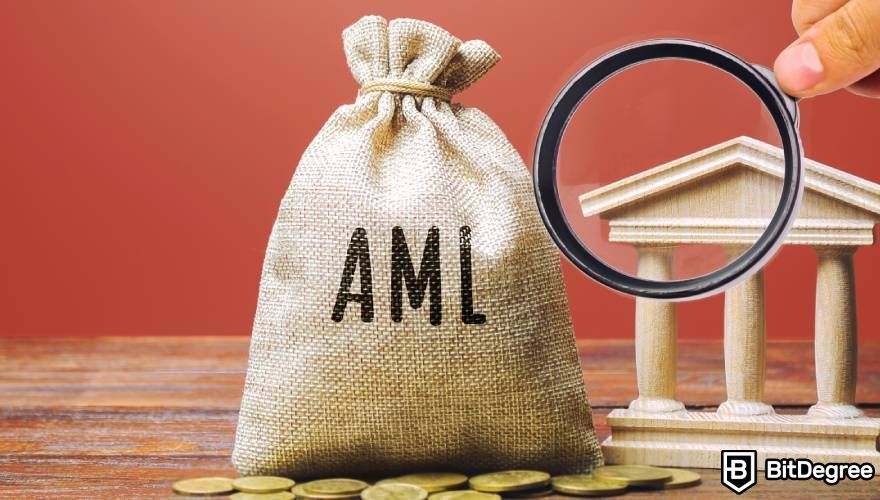
Additionally, if you’re interested in the developmental side of things, Etherscan has some options that might be useful to you in this regard, but they also require registration on the block explorer.
But with all this talk of what is Etherscan, it’d be amiss of me not to mention what it isn’t. Despite being able to look up data from various addresses, you will not be able to open a wallet through Etherscan.
The service is only meant to simplify the information-finding process on the blockchain, and it is worked on by people who are in no way associated with the Ethereum Foundation. It acts as an independent entity that aims to support the transparency and accountability of the blockchain.
In fact, according to research, blockchain records can assist in anti-money laundering efforts or track the monetary flow[1] of not only individuals but businesses too.
With all that said, here's a bit of a tangent when it comes to the question of what is Etherscan - there's no real iteration of the Etherscan app. In fact, most of the platform's accessibility is kept for browsers, so keep in mind you might not be able to easily use it on the go.
What Can You Do With Etherscan?
One of the main utilities that Etherscan provides is the aforementioned ability to take a closer look at various crypto wallets. You can easily look up specific addresses to double-check the movement of crypto and related information.
This can be useful not only if you want to check the comings and goings of assets, but to verify who the wallet belongs to. Of course, not every address has an expressly stated owner, but some of the bigger ones do, so you can keep an eye on wallets belonging to exchanges or other services.
Now, in addition to how many funds the wallet has and who potentially owns it, you can see the list of transactions the wallet has been engaged in. You can also delve a bit deeper into the financial side of things.
A wallet’s layout displays the amount of ETH it holds, and the value of those funds. Furthermore, users can take a peek at other tokens the wallet might hold. As previously stated, they all are based on the same standard, supported by the Ethereum network.
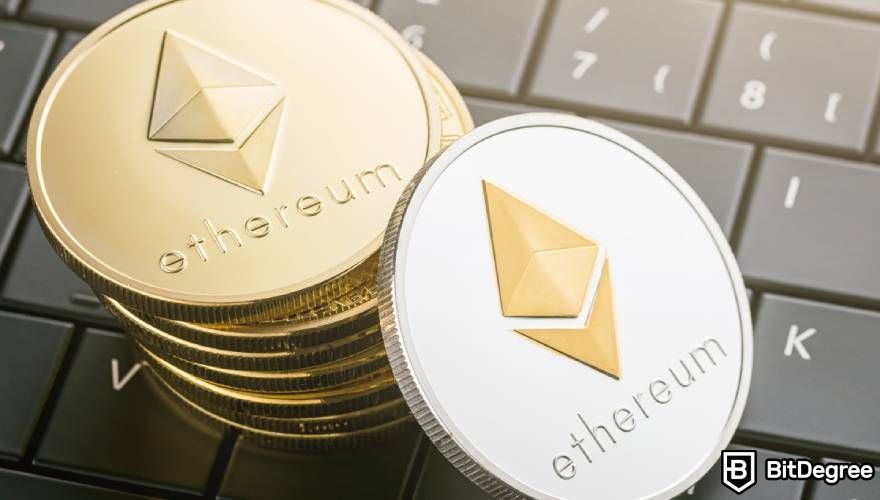
In this 'What is Etherscan' tutorial, I want to mention one more utility - the analytics section, which, of course, gives a visual representation of fund movement in relation to the wallet, as well as some arbitrary values of the address (often displayed in USD).
Essentially, the wallet presents a transparent view of how the owner holds and spends assets. This shores up the security of the trade and the industry as a whole because it’s much harder to bypass the rules or forge transactions when anyone can simply check up on your activity.
All at once, it increases personal accountability while upholding the anonymity that blockchains are known for.
Following up on how to read Etherscan, this block explorer doesn’t give you a wallet to be used; instead, you get information regarding the addresses. And no data is more impactful than transactional information.
On the surface, it’s just a long ledger that shows which currency the wallet sent out, and what assets it received. It also displays the numbers - both IDs and monetary value - so you can freely track how people are trading within the space.
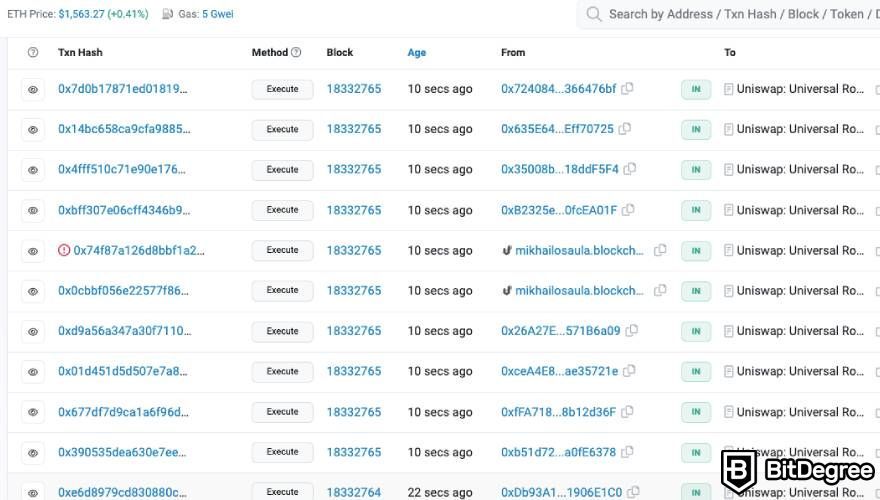
Other useful information includes the times the transactions took place, the recipients, values and even the tax placed on the transaction. Basically, a question of what is Etherscan can be seen as a brief breakdown of a ledger, with all the data you might need to verify certain transactions.
But where the feature shines is in big transactions. Or rather, their tracking. Because of its functionality, a block explorer can display the early warning signs that something shady is happening in the industry.
Let’s say someone is moving huge amounts of assets from one wallet to another. In normal circumstances, this might be their own business, but sometimes, very large sums in the crypto world could signify that something is amiss.
The ability to track the movement of crypto through several different addresses lessens the chance that someone might get away with rug pulls or similar schemes.
Blockchains, in general, are known to keep public records about interactions on them.[2] The same transparency of the blockchain comes into play here, too, since you can check up on transactions not only from the wallet’s side; the transactions have their own identifiers too.
This form of ID displays general information about the transaction, such as the number of assets that were exchanged during the trade and whether the action was successful.
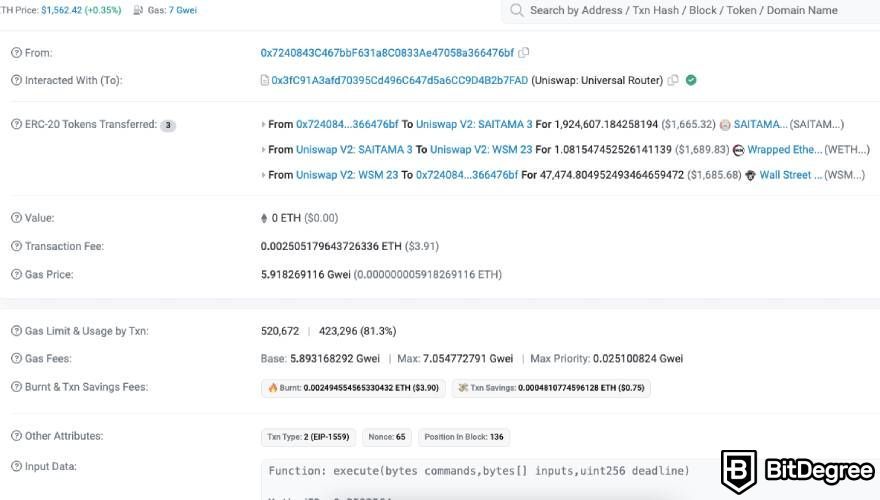
On top of that, there’s additional block identification through block ID, which shows how many withdrawals or transactions took place on this block, as well as who mined the block and how they were compensated for it.
Essentially, with all the data compilations, Etherscan allows users to explore various wallets and their transactions, keeping true to the idea that blockchain should be accessible to everyone, and propagating the idea that information needs to be clear and understandable to both newcomers and veterans alike.
I can’t discuss the topic of what is Etherscan without mentioning the supplementary utilities the block explorer can provide. And chief among them is the information about gas prices.
There are three gas categories that the block explorer singles out: low, average and high gas cost, which is frequently renewed to reflect the current state of the market.
Ethereum gas tracker gives a concise overview of the current status of gas as well as the older data spanning 7 days, so you can track the changes in price and what influenced it. In turn, this allows you to make a better-informed decision regarding your transactions (e.g. if you should wait for the price to decrease or cover your transaction fees before the cost skyrockets).
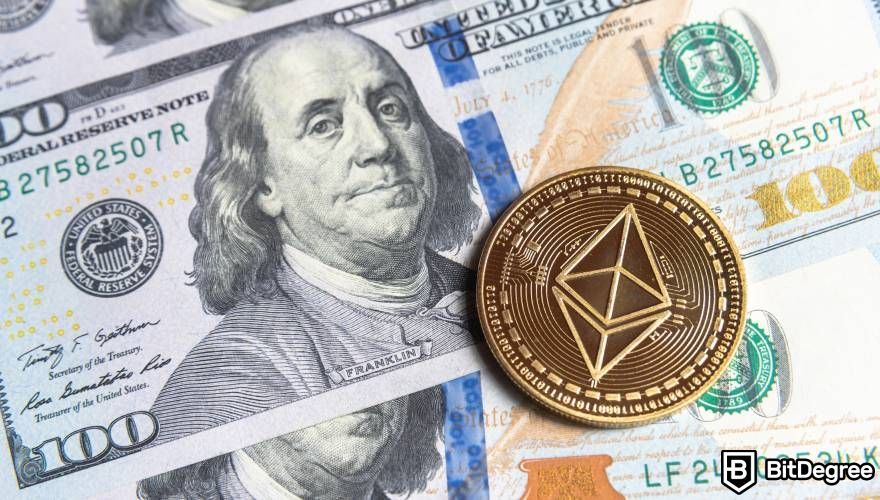
Together with the fluctuating gas prices, you can examine accounts that consume the most gas on the network. You can arrange them according to the fee cost or the expenditure percentage based on 3-hour or 24-hour intervals.
This might seem minute since the fluctuations are often on a smaller scale, but gas is an unavoidable and inevitable part of ETH trading, so naturally, those small expenses could add up to quite a sum in the long run.
According to the three aforementioned estimations, the Etherscan gas tracker provides users with a predicted cost of various transactional options, such as token swapping or transfers, while using various services.
This further enhances user experience, as the information from the gas tracker can be successfully combined with your future transactions, ensuring you take advantage of the market conditions that are most suitable to you.
Looking for a reliable way to transfer crypto? Check out Ogvio!
Etherscan and Decentralized Exchanges
With all the talk on what is Etherscan, there’s no denying that the block explorer is important to users who prefer centralized services, but naturally, you might wonder about decentralized transactions. And I want to shed some light on the topic.
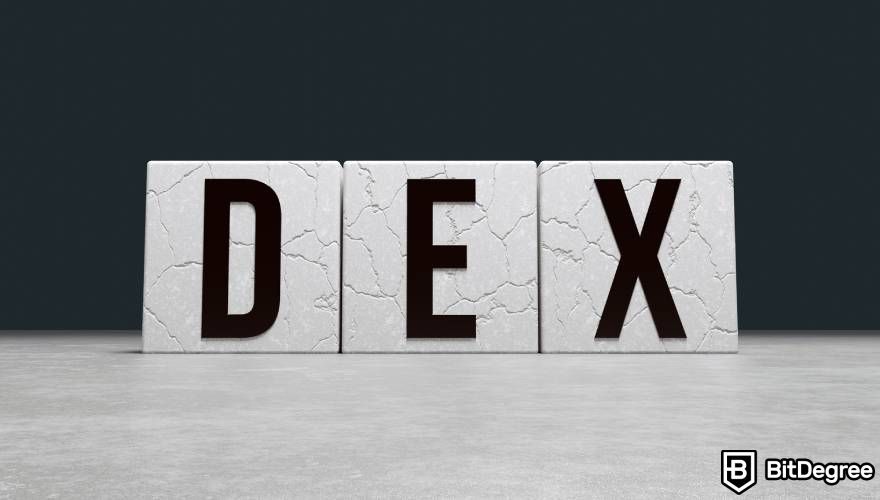
While the ability to track wallets and their incoming or outgoing funds is required to maintain transparency on the network, decentralized transactions can also benefit from the block explorer, albeit indirectly, since Etherscan enables users to check and verify smart contracts.
It’s no secret that smart contracts are crucial to decentralized services. Unlike with the centralized counterpart, there are no ties that could lead you to a holder of a specific wallet. Decentralization turns privacy up to eleven, but that doesn’t mean there are no safety barriers in place.
That’s where smart contracts come in. Users can use them to basically set up conditional transactions. In essence, these contracts are a set of specific rules that dictate how transactions are fulfilled or rejected.
Let’s say you want to trade ETH for SOL. You can create a smart contract that will enable you to trade x number of your tokens for y amount of assets you want. The rules are set, and if either party (you or the seller) doesn’t meet the requirements, the contract is not fulfilled.
This ensures that no one can unilaterally bypass the ruling of the contract, so the probability of a scam is much lower compared to similar agreements without smart contracts.
Etherscan allows you to look up contracts and see their status, which in turn enables you to verify the correctness of the contract and see its layout. Users can also create contracts using the Etherscan service.

The service offers some templates you can pick, ranging from transfers to open trading. But they all depend on the individual contracts and are conditional, since some of them, unfortunately, don’t offer creation options.
How to Use Etherscan?
There are two ways to look at Etherscan. One is from the user perspective, where you have all the tools you might need to track certain wallets or the movement of assets. It provides all the data you could require to make an informed decision on your trading within the Ethereum network.
As previously discussed, the block explorer’s primary function is to simplify the data from the blockchain, and so most of the utilities provided by Etherscan are aimed exactly at that - to keep the information accessible without any external knowledge.
But aside from the informative aspect, regular users don’t really receive any applicability from Etherscan. This changes if you go beyond the regular user, and that’s where another way to use the explorer comes in.
The second method is meant for developers and offers a more technical set of services. The main one is the API subscription plans that provide specific data from Etherscan and allow users to build reliable applications.

Essentially, the API plans provide more specialized support. For example, as a regular user, you can easily look up gas costs on the network. However, with the specialized plan, you can implement a gas tracker to fit your needs.
Much like with the tokens or coins, Etherscan allows you to track NFTs too. You can find all the relevant information, such as who sent which NFT to what address. Much like with the wallet data, users can look up transaction times, the market where the purchase took place, and how much a seller paid for the item.
Ultimately, once you learn how to read Etherscan, this feature serves almost the exact function as wallet tracking, only it’s aimed at the NFT market. This means you can keep an eye out on the movement of specific NFTs, which can be for your own benefit or to ensure that nothing shady is going on in the market.
NFT information contains details such as purchaser and seller, as well as where you might buy the item. Then there’s the mint price and sale costs for further transparency. You can also look up top NFT mints and check in on their progress or how many assets they have.
In addition to the ongoing token tracking efforts, Etherscan aims to educate users as well. There’s a selection of learning materials for you to browse through. Of course, it’s primarily designed to help users learn more about Ethereum and its usage, both for newcomers and veterans alike.
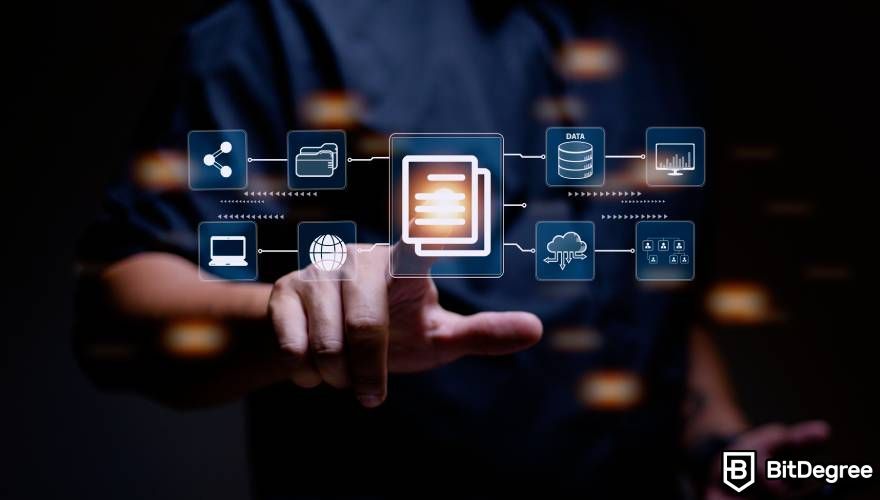
There’s a selection of tutorials that’ll enable you to delve deeper into complex topics. And if you’re looking for more technical advice, there’s the section featuring developmental tips.
And if you’re seeking some more support in your endeavors with the Ethereum network, there are additional articles that feature everything from how to better build dApps or further your understanding of Etherscan itself.
In the end, the information center is meant to supplement your journey through the Ethereum network. It serves as an additional tool to help users learn and improve as they get accustomed to this specific blockchain.
Of course, this leads to the most obvious downfall in this situation - the fact that the majority of the supplementary learning material fits only Ethereum, and some of the knowledge is not transferable to other networks or even other block explorers.
Related Supplementary Applications
True to the topic of what is Etherscan, I covered that the platform is crucial to Ethereum, but there are similar block explorers dedicated to other assets and networks, and it probably comes as no surprise that, for example, there’s more than one for Bitcoin, too.

Fundamentally, they serve the same purpose as Etherscan, meant to simplify information and present it in an understandable fashion.
Those platforms provide many of the same features, including checking in on transactions through their IDs. Often, the information also includes the identification of the block that’s associated with the transaction, as well as potential values.
Lastly, an important tidbit when it comes to assets is whether the transaction was approved or still pending. This allows users to be aware of the ongoing trades between wallets, and, in turn, this can raise some red flags if things don’t add up. Exactly like with Etherscan.
Bitcoin block explorers work for the same base principle as the star of this tutorial, and that’s to ease users into the veritable ocean of information that makes up a blockchain. This not only keeps you in the loop on what is happening with your assets and transactions but also gives a grander view of blockchain activity.
It lowers the possibility of nefarious activity on the network as a whole since there are many eyes that track the transactions, especially the sizeable ones.
So, as previously stated, block explorers, regardless of which asset they support, are meant to serve two purposes: to allow users to better understand their own transactions and increase the transparency of the blockchain.
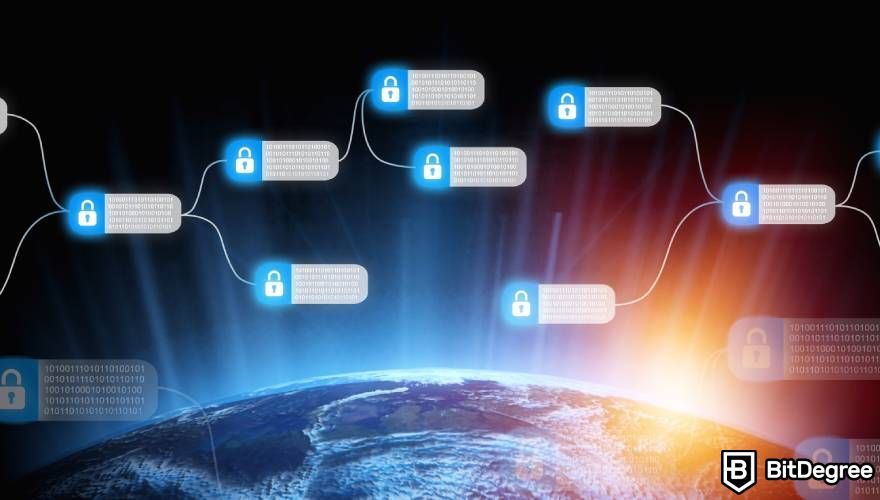
But keep in mind that despite working in much the same manner, these explorers don't intersect, so you cannot check all your wallet's transactions through one platform. The nature of different blockchains requires separate applications, and this means that while fundamental usage is similar, there's no one-glove-fits-all option available.
Now, since we thoroughly discussed what is Etherscan, it’s only prudent to introduce an alternative to block explorers. And that’s BitDegree's Crypto Tracker. Here, you can find a concise list of assets, and a wide variety of information about them.
The data is constantly updated, so you know you’re getting fresh and relevant information. And, as the proverbial cherry on top, each crypto has its own section that will not only introduce you to the asset, but also present the monetary values and market status.
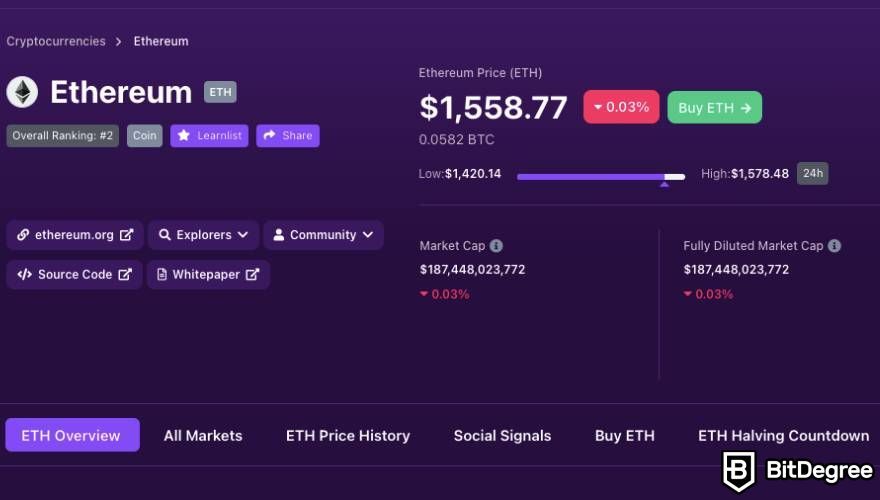
There are even visual representations of the market conditions, such as prices and how they fluctuate over time. The graphs illustrate the shifts in the crypto market and allow users to envision possible ups or downs when it comes to their preferred crypto.
If the synopsis is not enough and you’re looking for something more specialized, individual BitDegree crypto project pages have a convenient link to block explorers. Each asset has its own list, meaning you will not have to wonder if one or another explorer supports the crypto of your choice.
And probably a crowning jewel of this whole setup is that next to the filtered and concise information, there’s one more tool that will help both new and veteran crypto enthusiasts. And that’s the Fear and Greed Index.
While it’s no Etherscan app, it provides additional utility to those who want to gauge the overall sentiment of the crypto industry. It is expressed in a simplified, number-based approach.
Like most data available in the overview, the index is also regularly updated to reflect the users’ mood regarding crypto.
Conclusions
At its core, the question of what is Etherscan has a fairly simple answer - it’s an Ethereum block explorer that supports honest trading on the network.
With it, you can look up all the relevant information, such as wallet transaction history or how many times a certain NFT changed hands. You can also look up additional data like trade costs (through Etherscan gas tracker), block identification, or even validators or miners.
All that, in turn, ensures that transactions on the Ethereum blockchain are visible to everyone else, keeping up with the transparency that’s largely associated with crypto.
Block explorers lessen the danger of sending your hard-earned crypto to some shady parties since you’re always in the loop with only a few clicks. To engage in safe trading, all you have to do is purchase crypto from a reputable exchange (like Ogvio, Binance or Kraken), check the address you want to send the assets to through Etherscan, and essentially avoid fraudulent transactions and possible loss.
Learning how to read Etherscan is largely intuitive since you can look up specific addresses or simply go through publicly displayed information and see what is happening in the trading sphere.
But with all that discussion on what is Etherscan, it’s worth noting what it’s not: the platform will not serve as your wallet (you will need to get your own, and here’s a list if you need recommendations), it will not allow you to look up trading outside of Ethereum blockchain, and there are some developer-oriented features that are locked behind subscription plans.
But to sum it all up, Etherscan is a great tool that can greatly enhance your understanding and execution of ETH trading by providing you with all the data you might need.
The content published on this website is not aimed to give any kind of financial, investment, trading, or any other form of advice. BitDegree.org does not endorse or suggest you to buy, sell or hold any kind of cryptocurrency. Before making financial investment decisions, do consult your financial advisor.
Scientific References
1. H. Heo, S. Shin: 'Understanding Block and Transaction Logs of Permissionless Blockchain Networks'
2. H. Kuzuno, C. Karam: 'Blockchain explorer: An analytical process and investigation environment for bitcoin'
